Abstract
The Haemosporidia, which comprise the malaria parasites, have probably evolved from Coccidia of the intestinal epithelium of the vertebrate host by adaptation first to some tissues of the internal organs and then to life in the circulating cells of the blood.
The present opinion is that, among the malaria parasites of primates, the genus Hepatocystis and the “quartan group” of plasmodia are the most ancestral, followed by the “tertian group”; from the evolutionary viewpoint the subgenus Laverania is probably the most recent.
Studies recently completed and research in hand on malaria parasites of apes and monkeys, combined with the possibility of assessing the infectivity of new simian parasites to Anopheles and to man, will be of great importance for a better understanding of the probable evolution of primate malarias. The fact that several genera of the Anthropoidea evolved in an ecological area where the association with the existing insect vectors of various plasmodia was close is suggestive of Africa as the original home of primate malaria. It is probable that the disease spread up the Nile valley to the Mediterranean shores and Mesopotamia, to the Indian peninsula and to China. From these main centres malaria invaded a large part of the globe.
It is also probable (though not proved) that malaria existed in the Americas before the Spanish conquest, and there is some likelihood that sea-going peoples brought it to the New World long before Columbus's voyages. Modern immunological methods applied to the study of the mummified remains of ancient inhabitants of America may help to solve this question.
Full text
PDF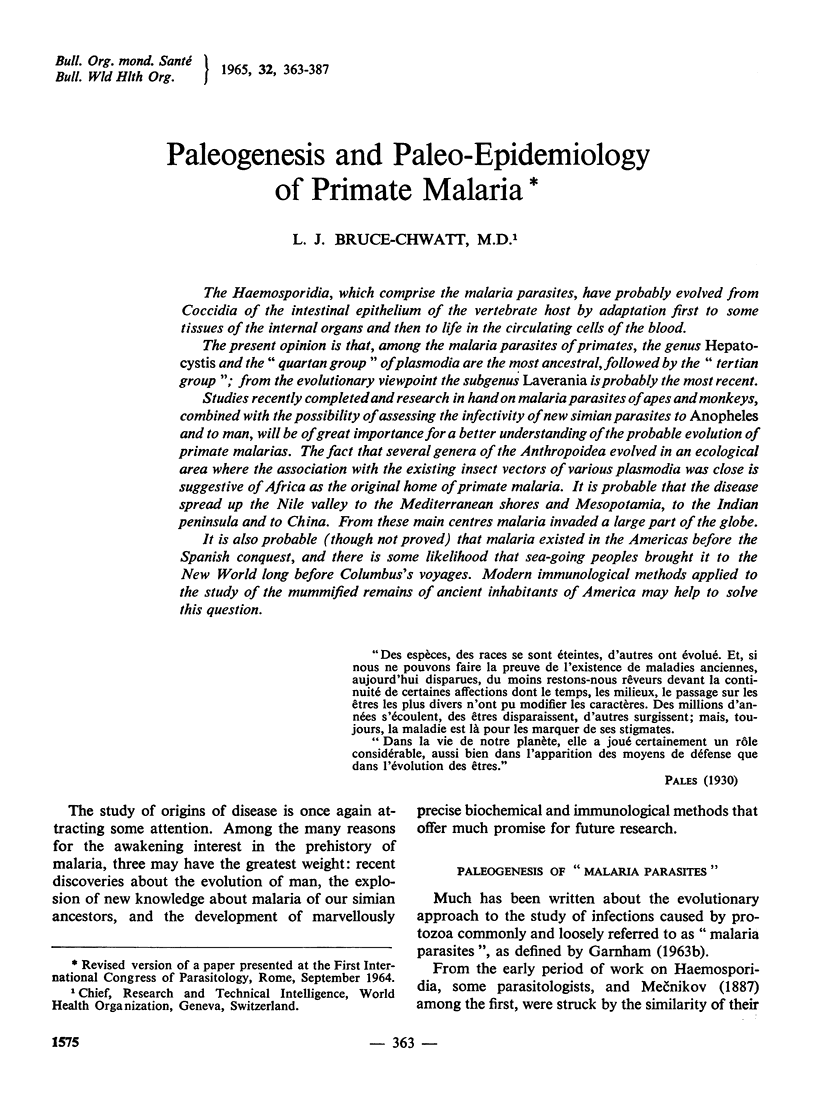

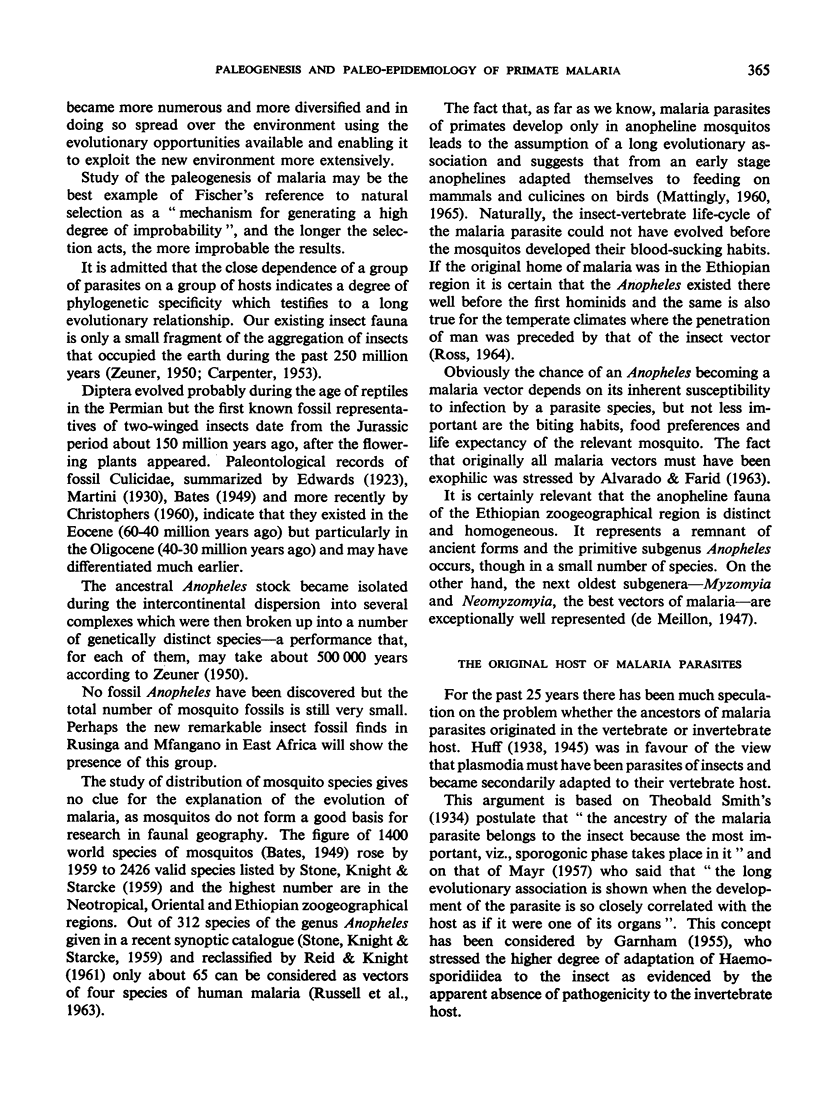
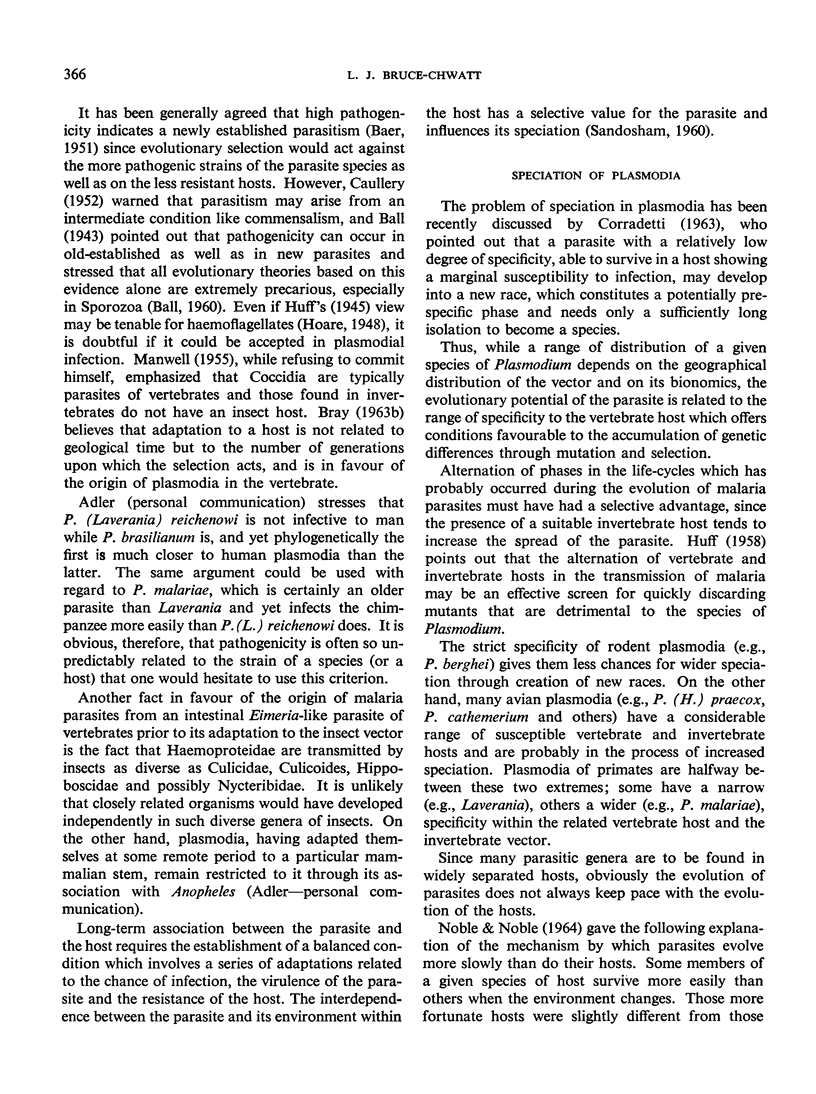
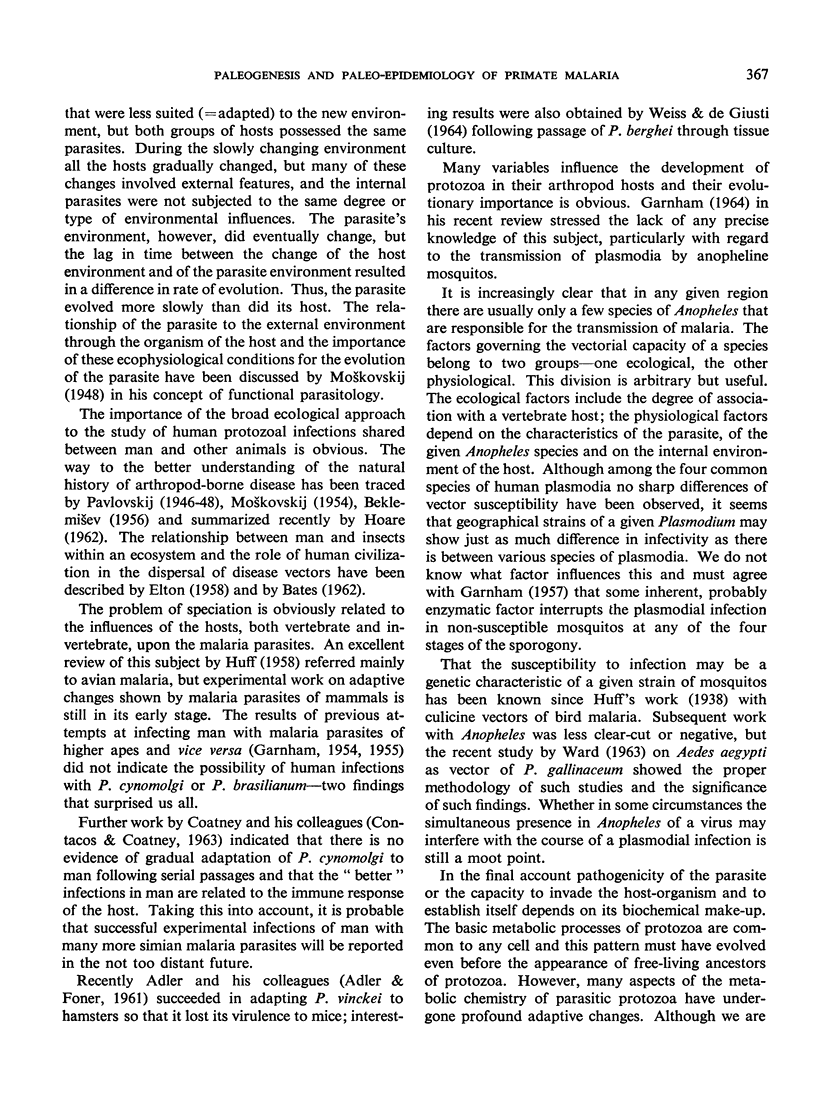
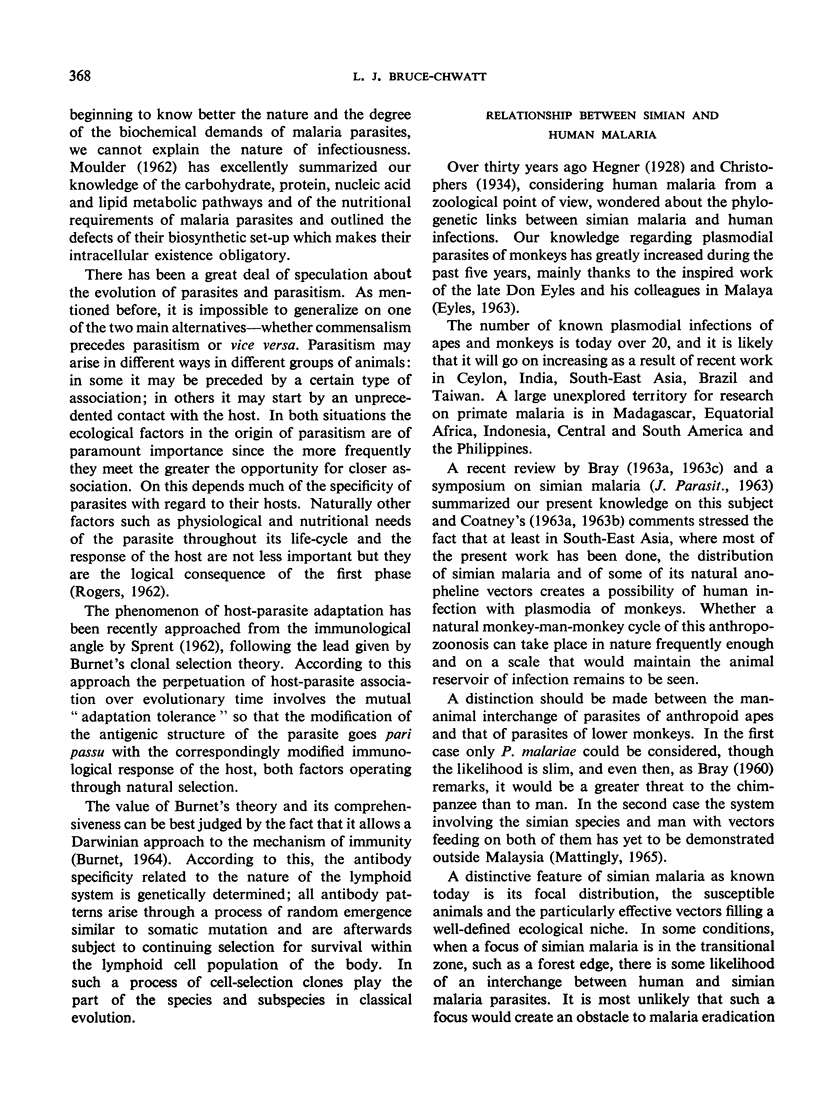
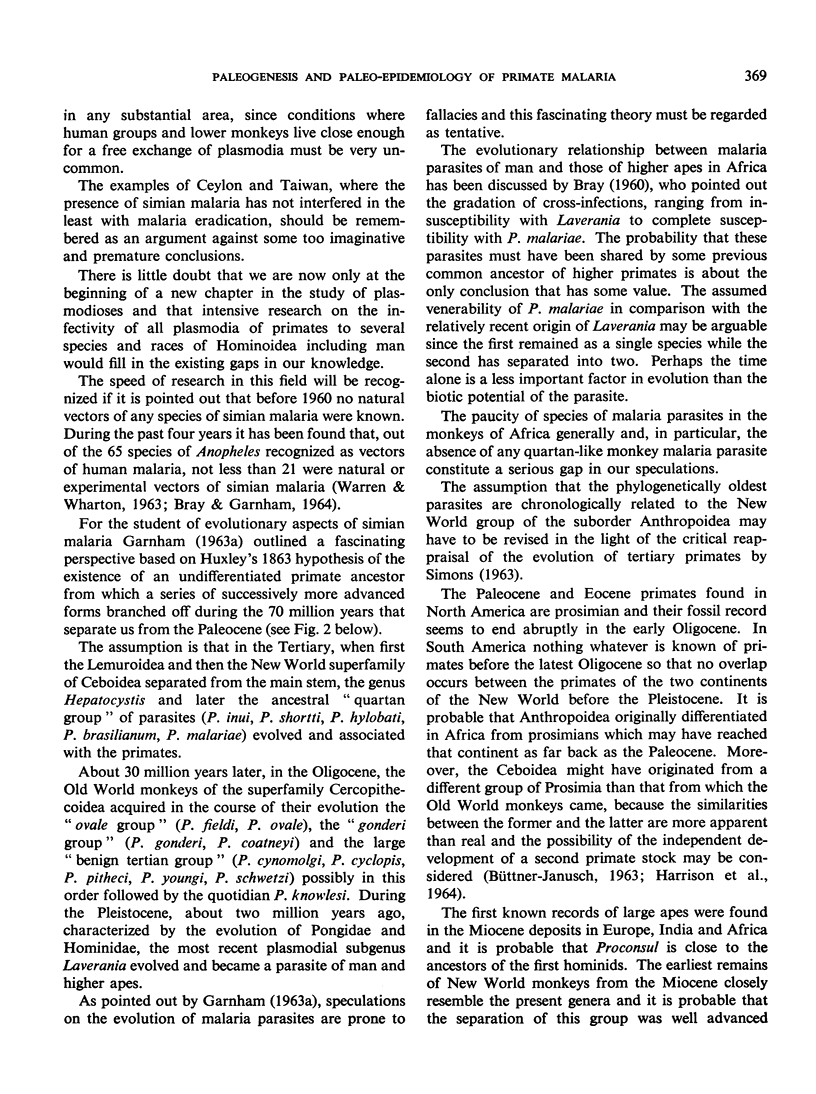
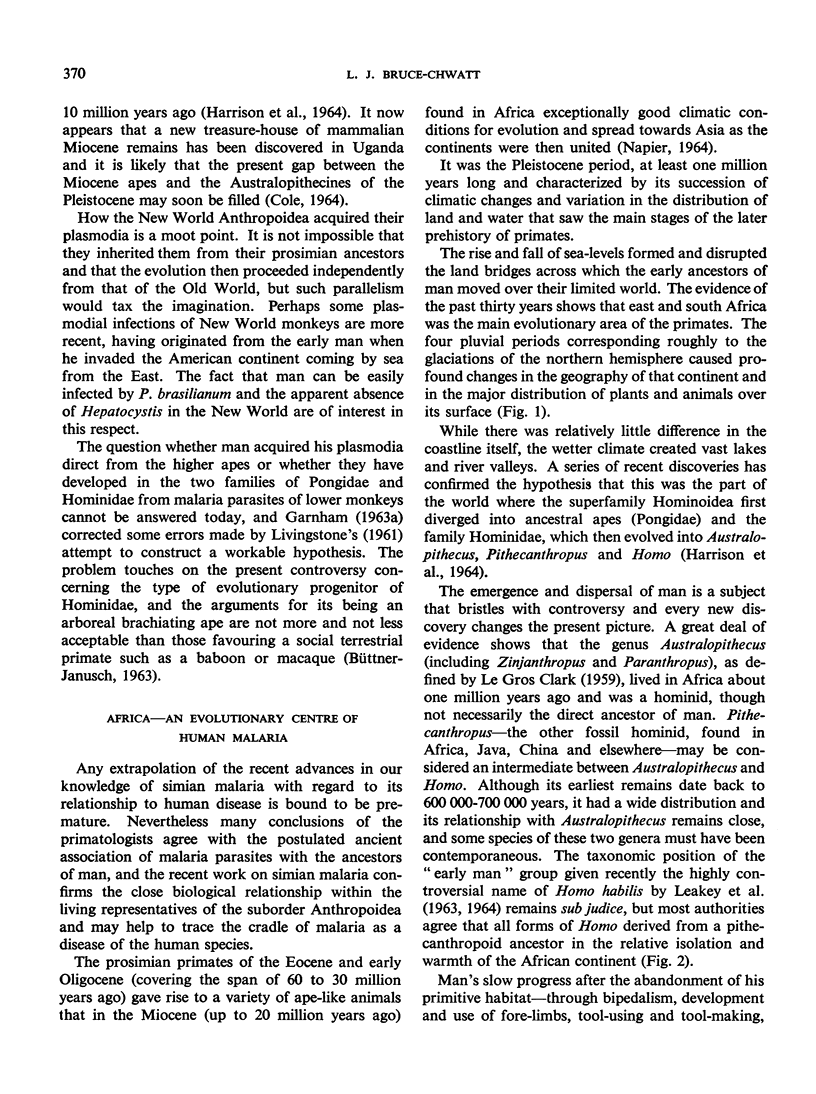
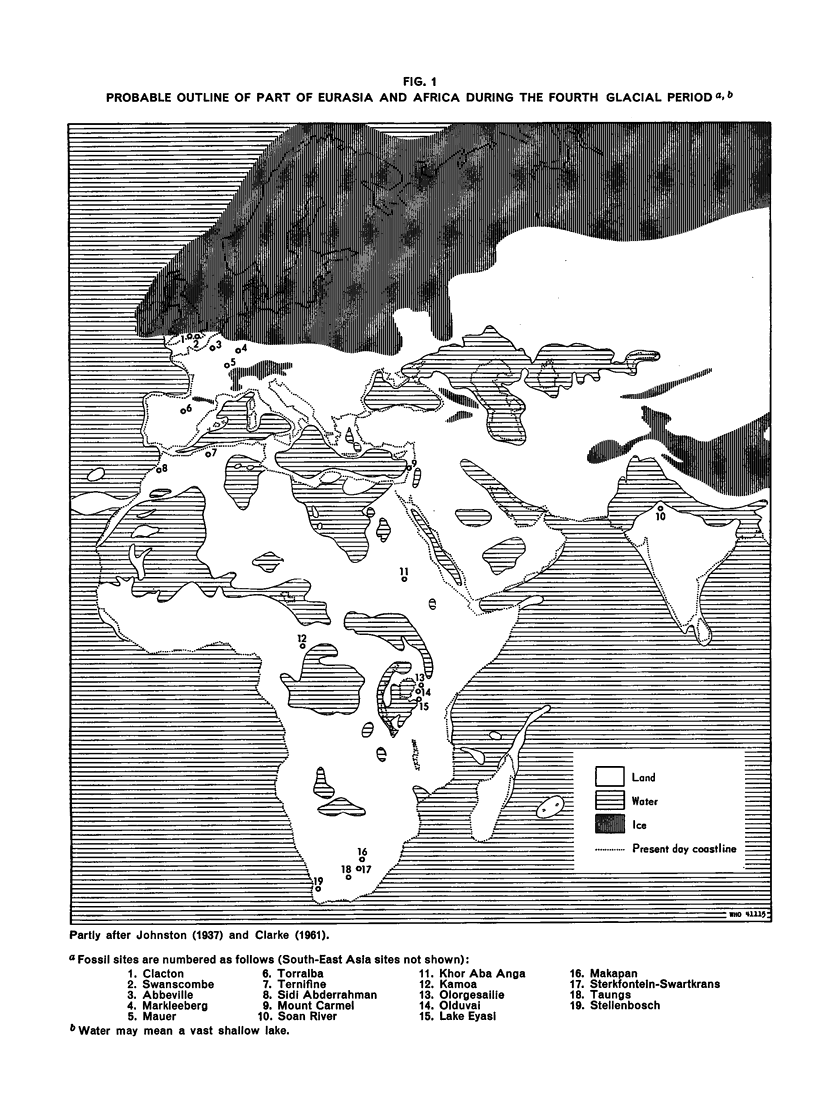
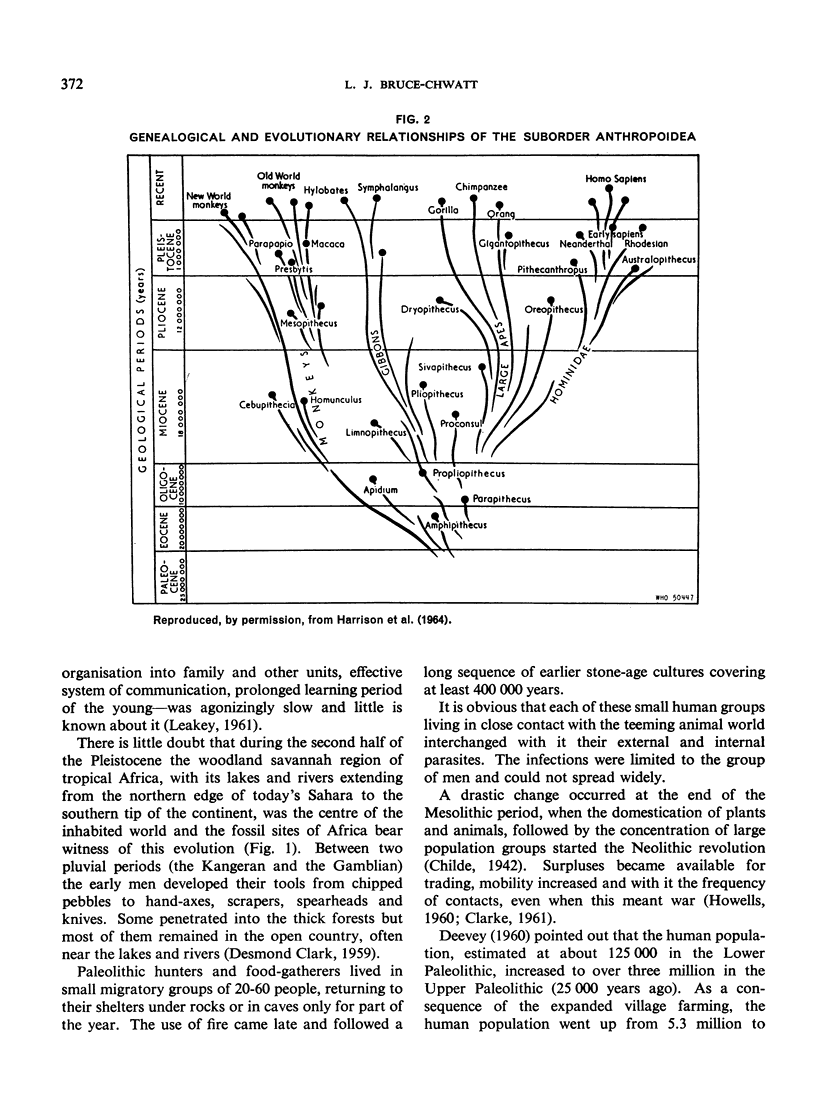
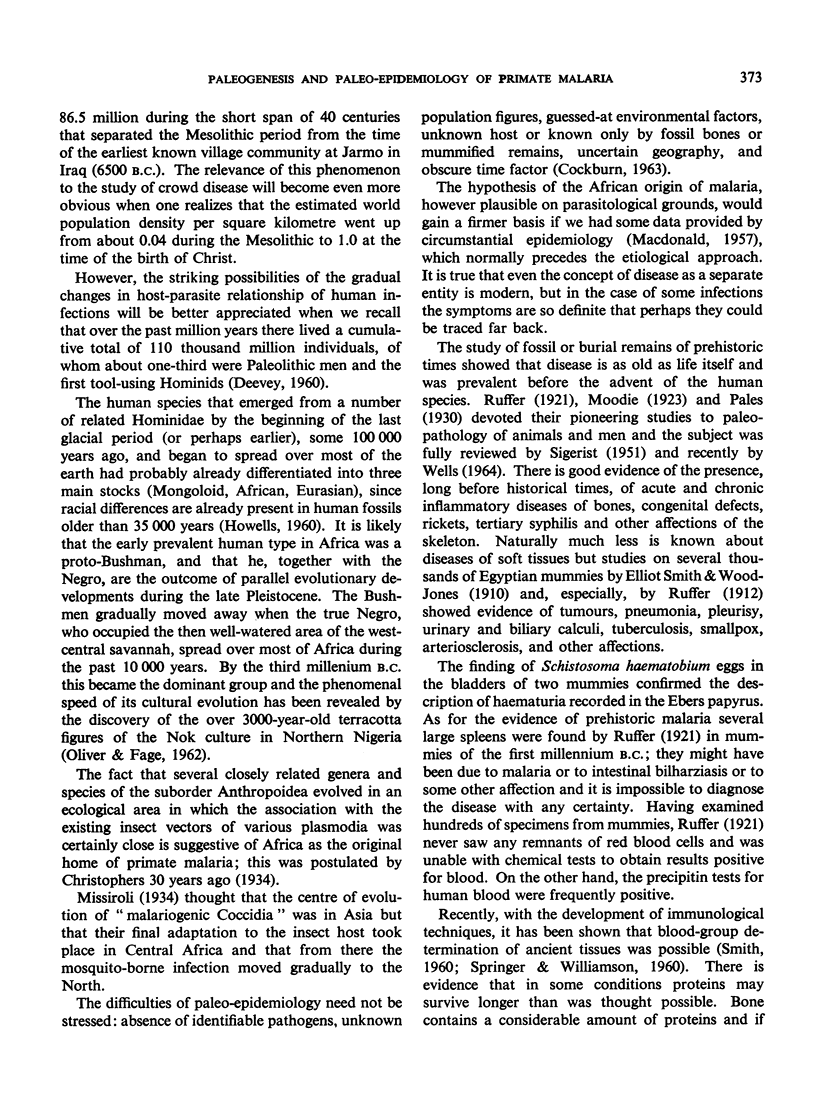
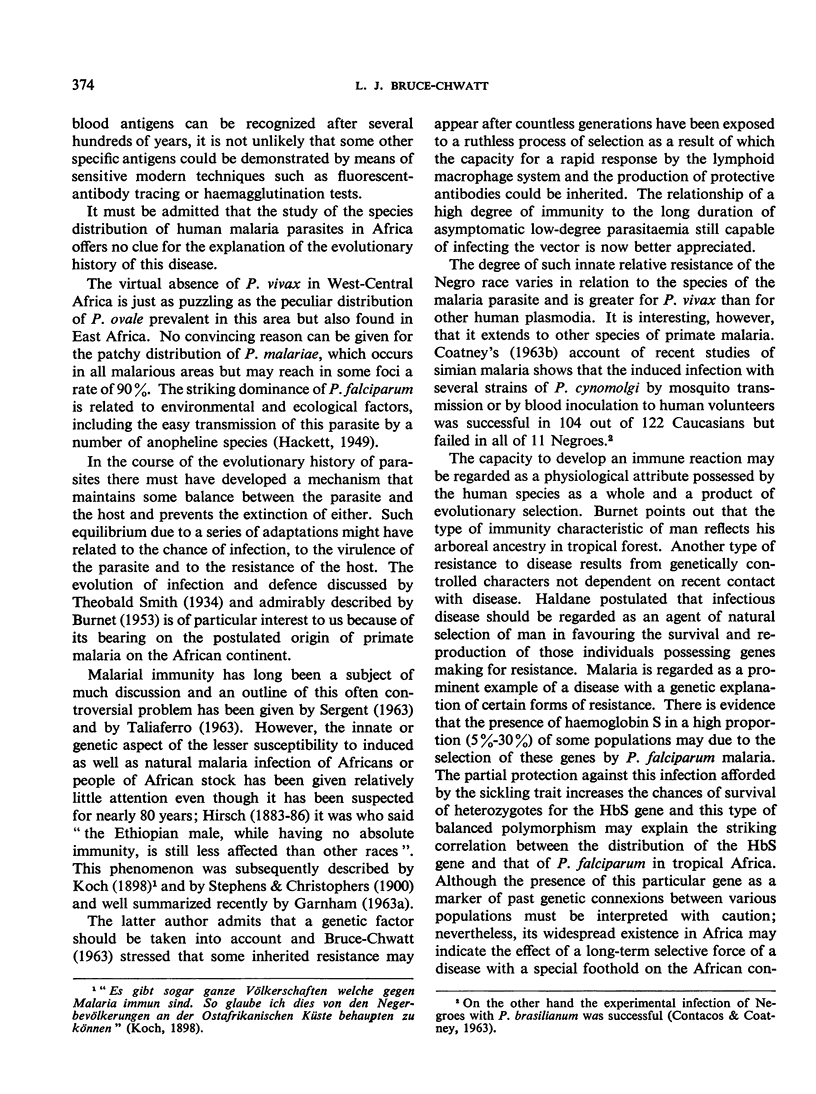

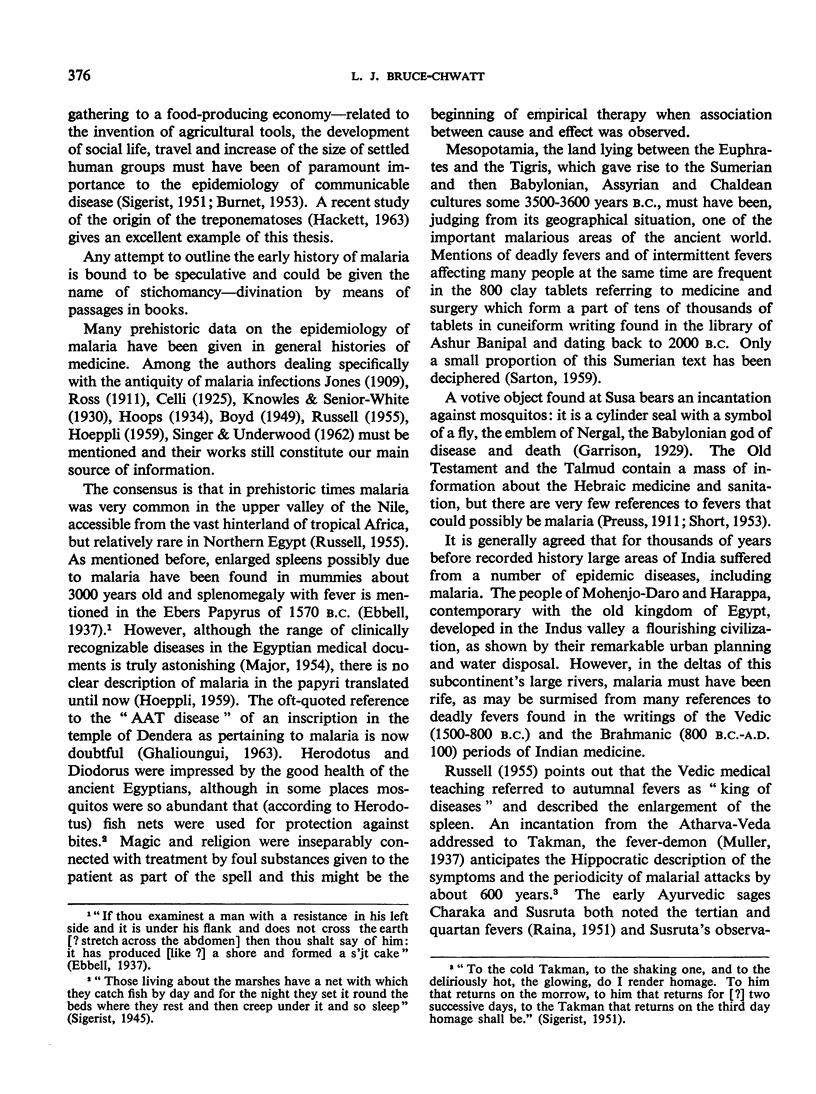
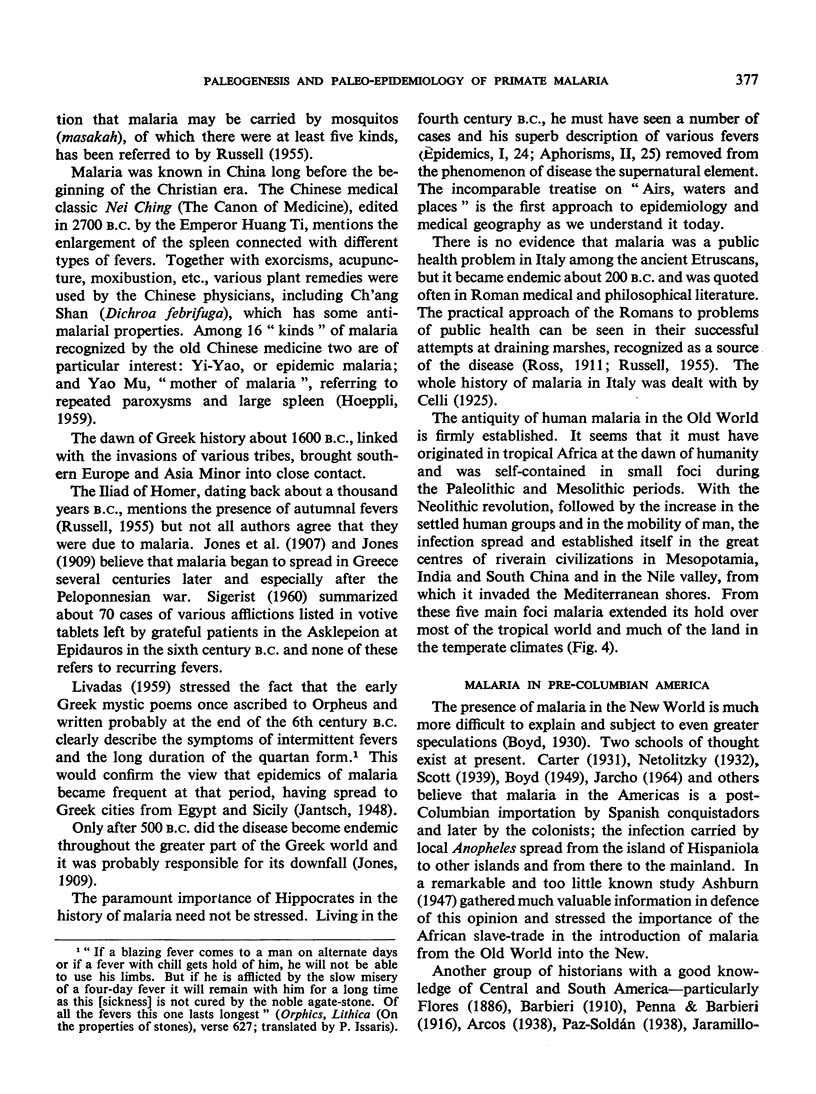
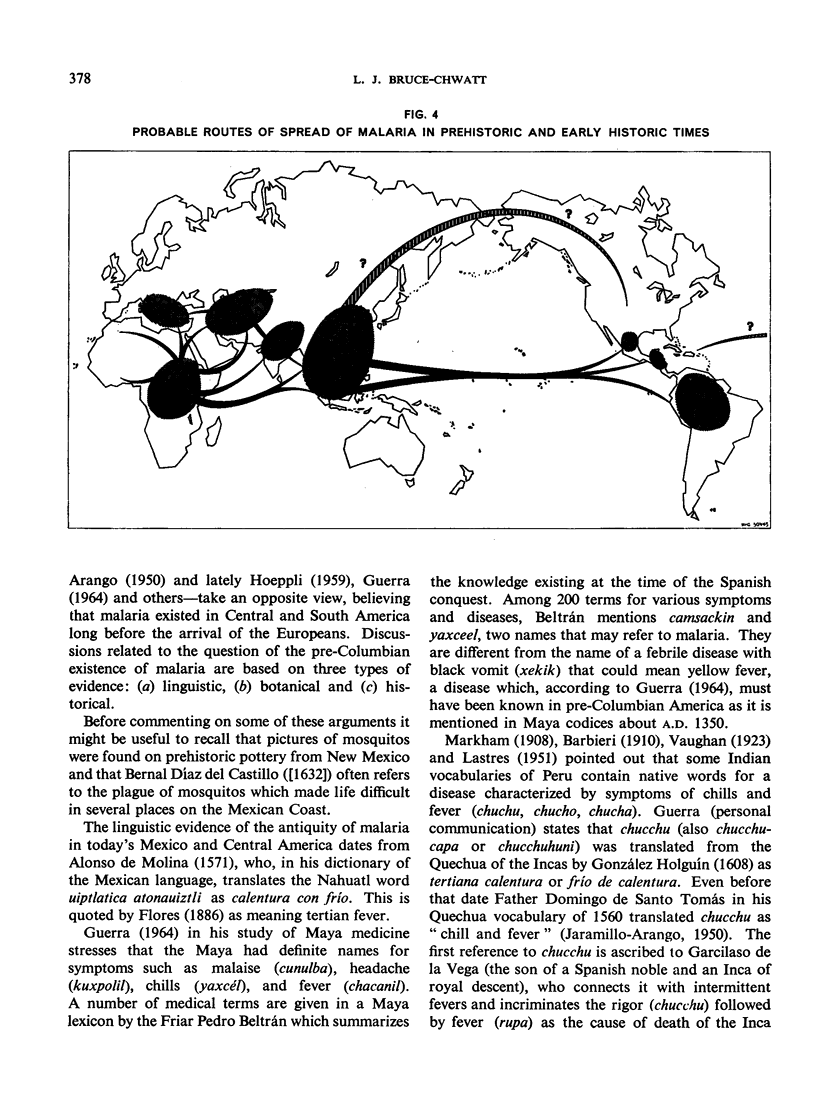
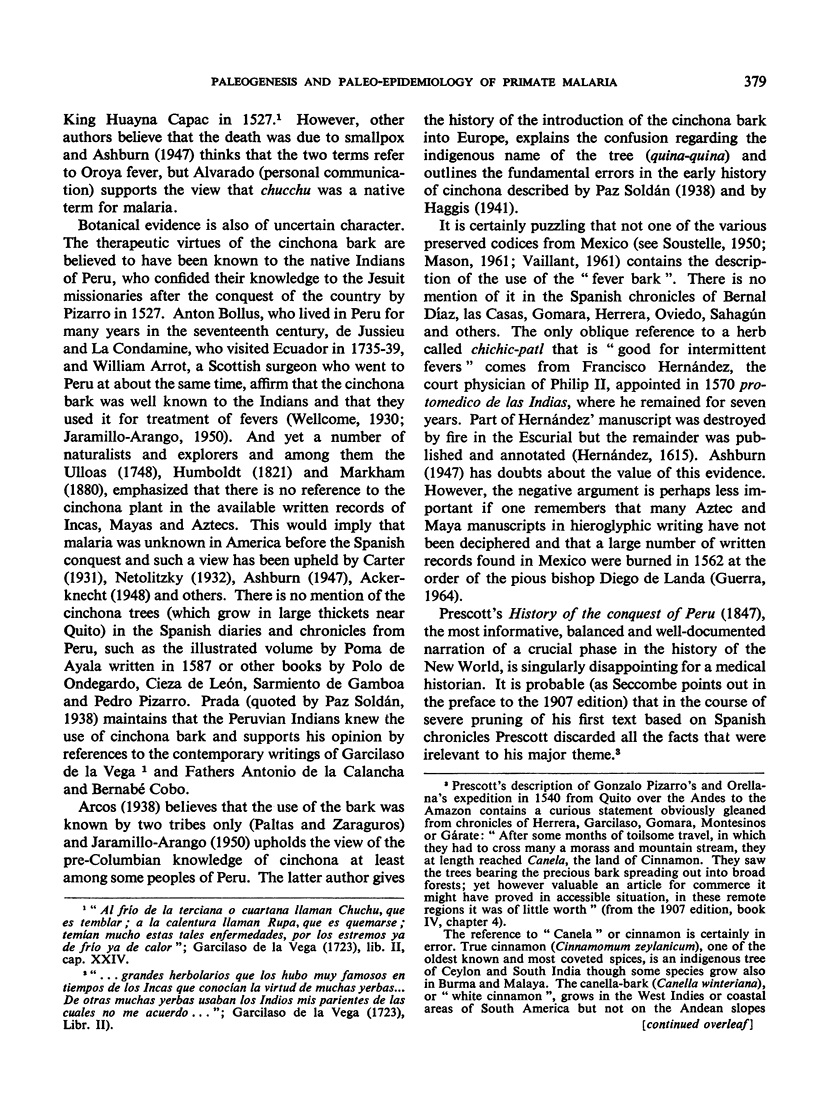
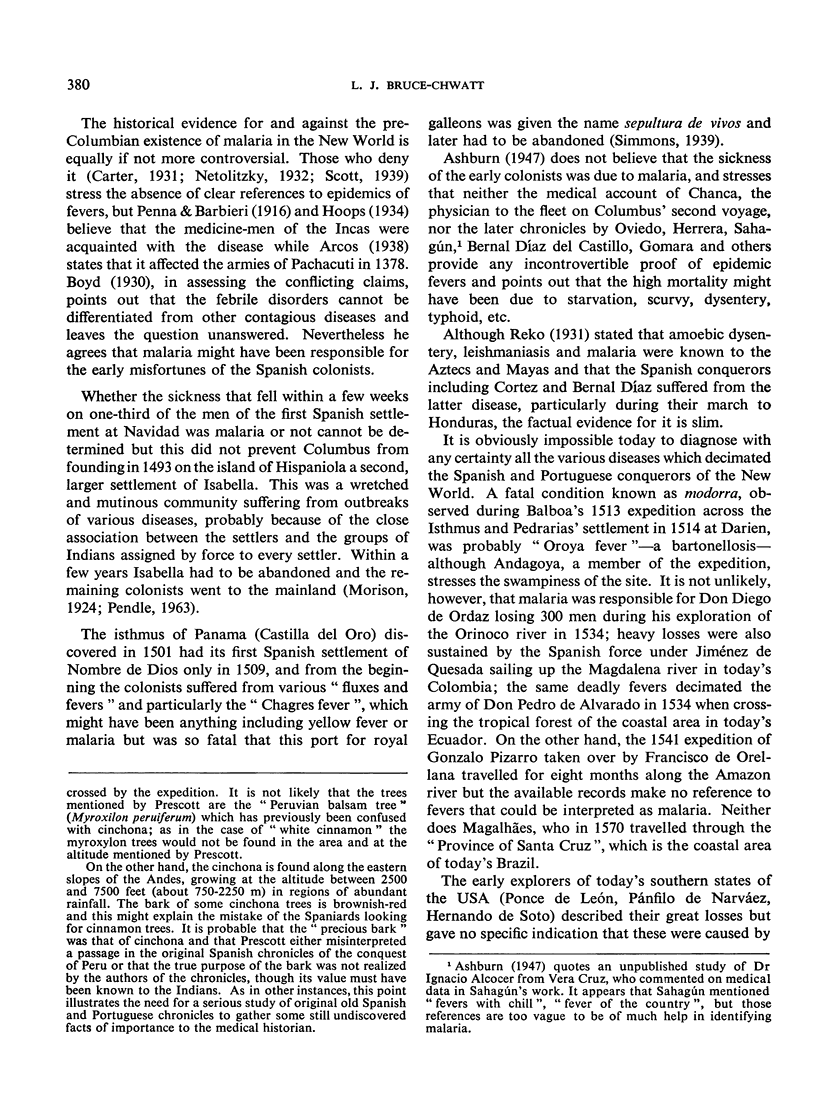
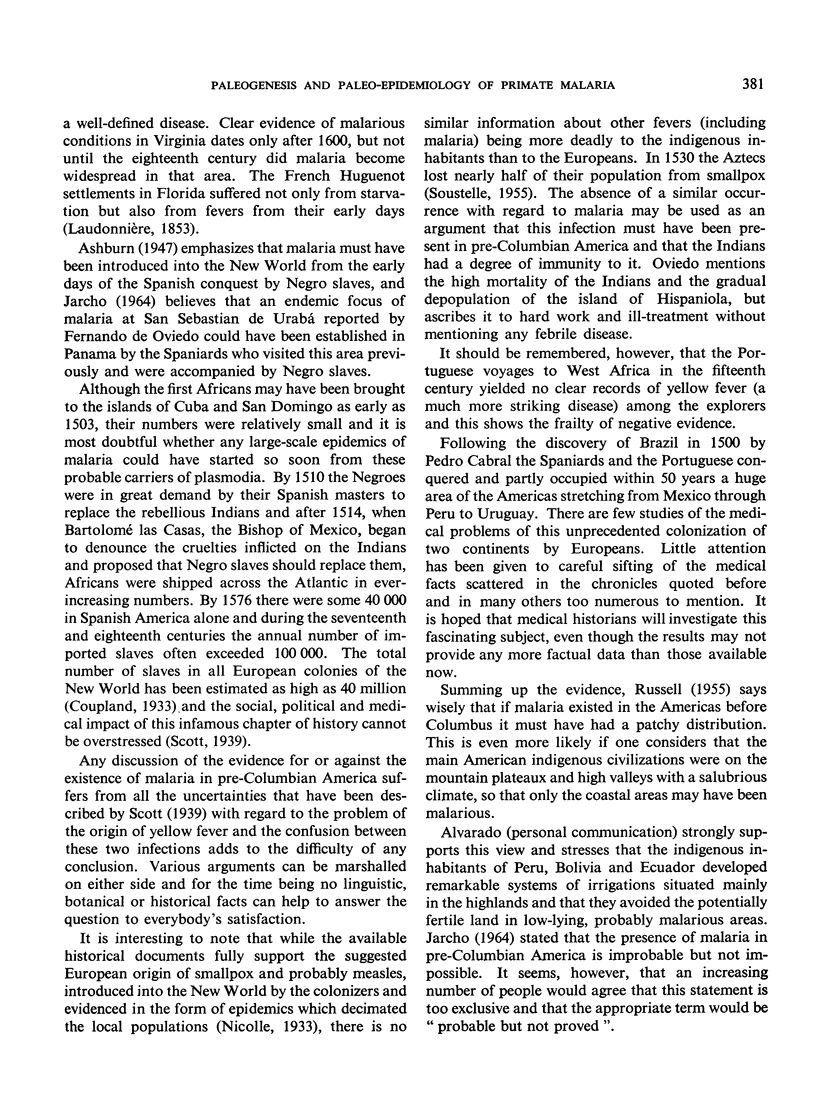
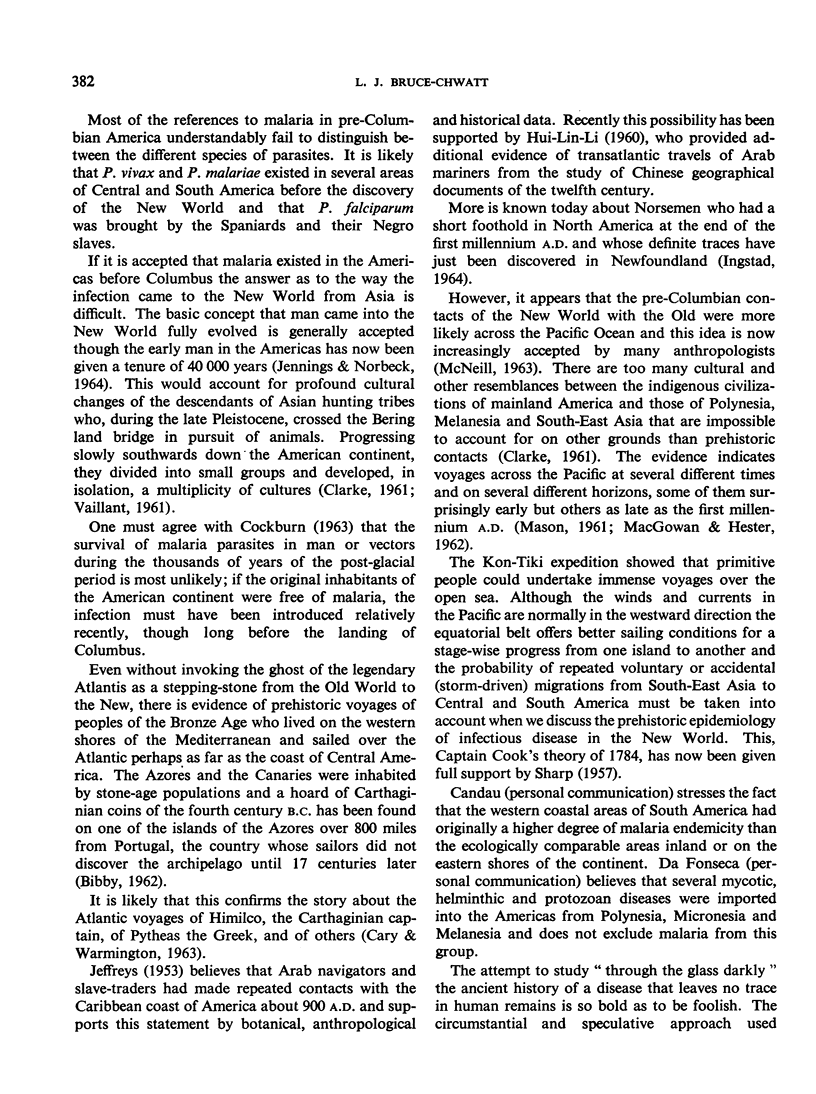

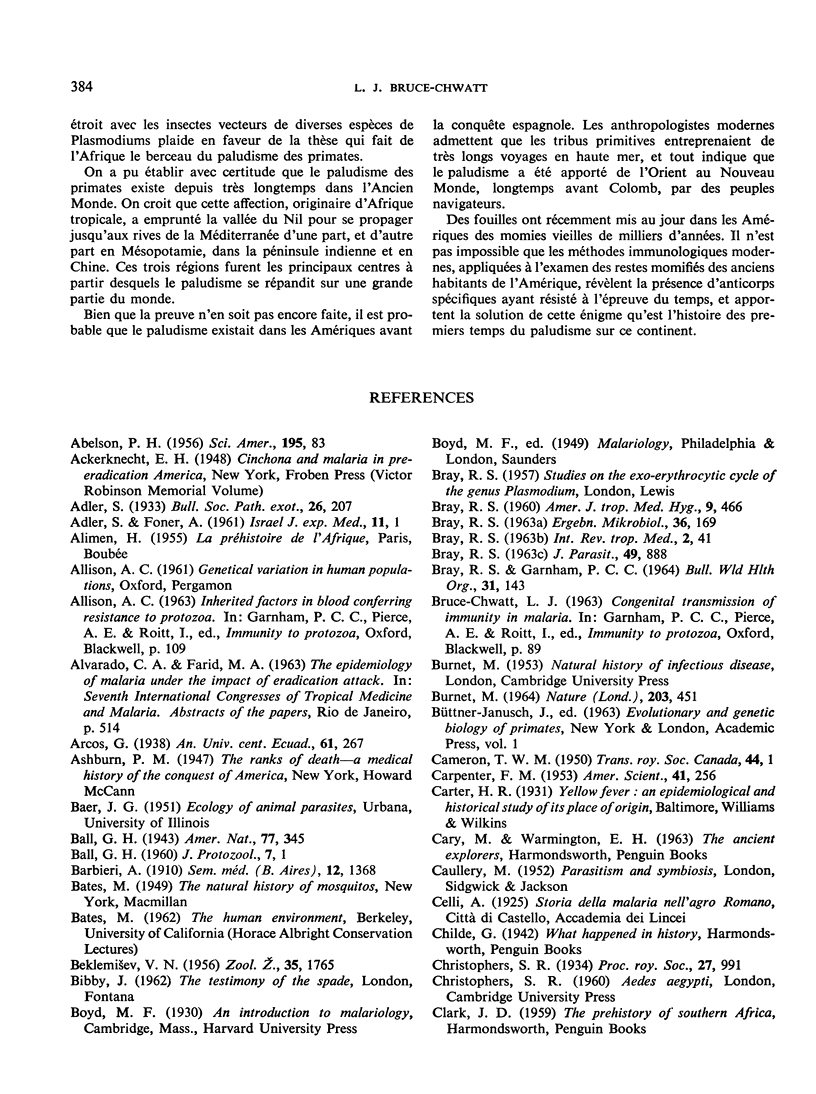
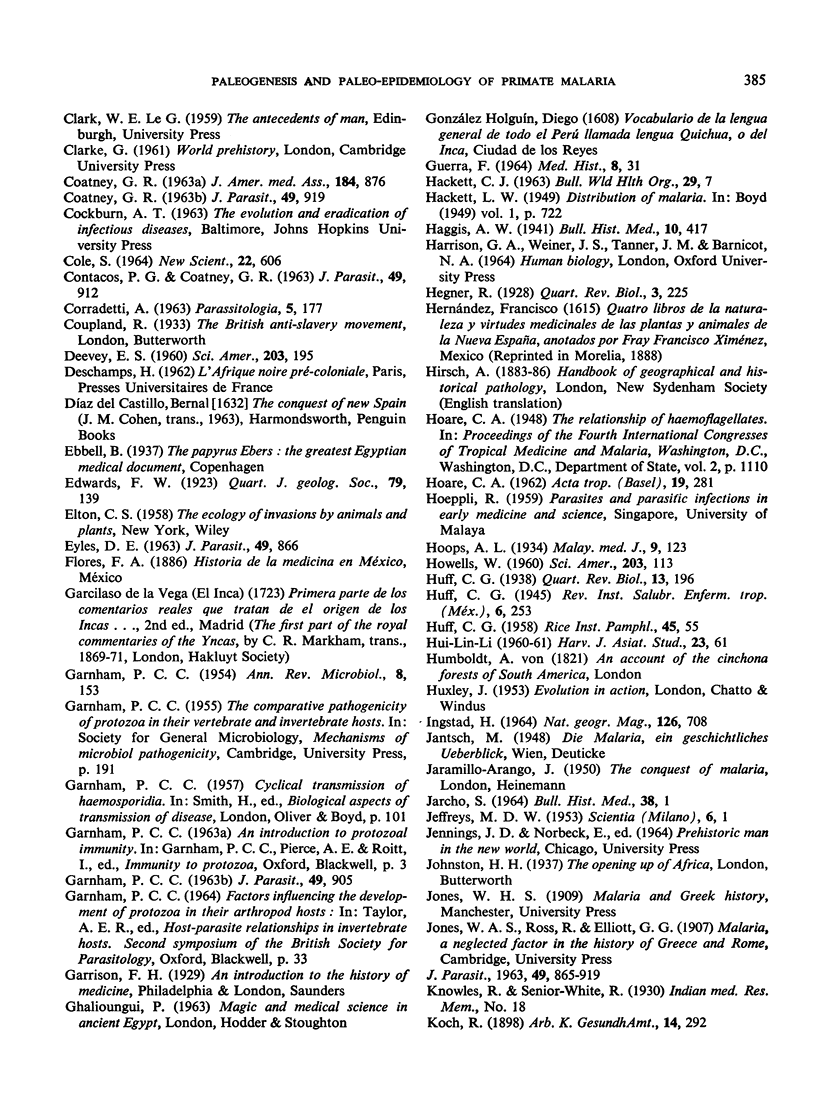
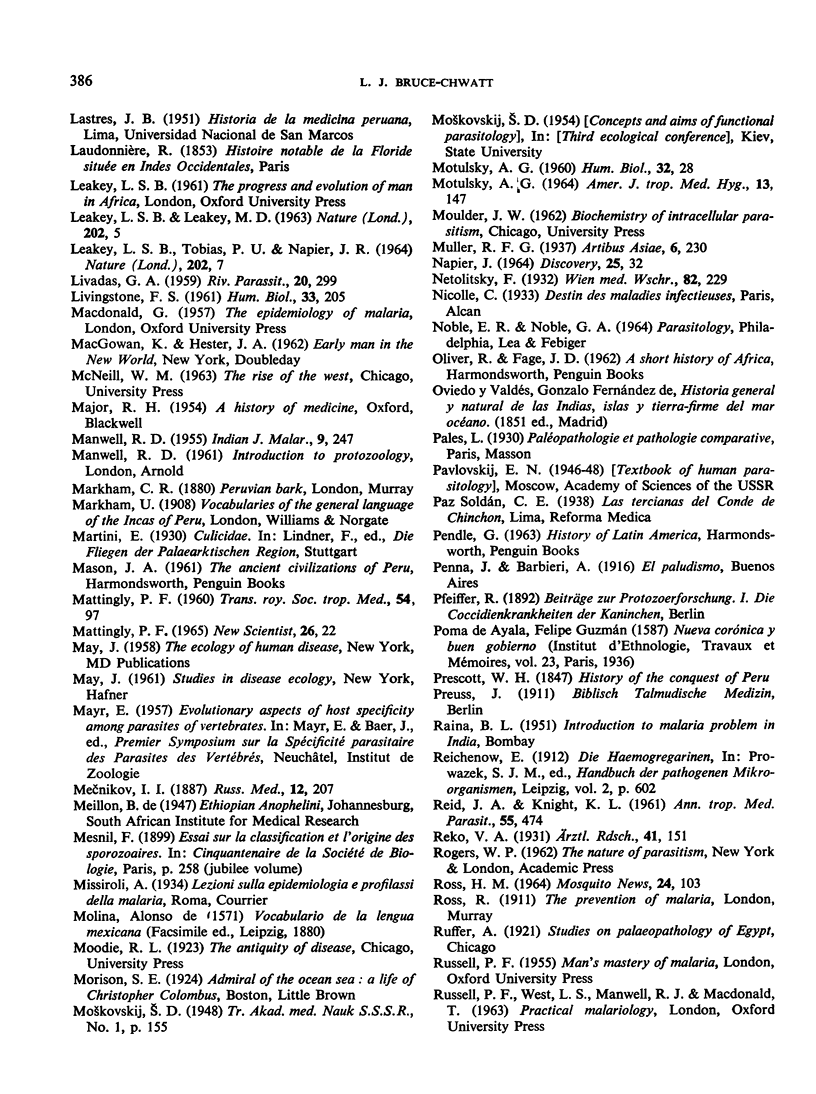
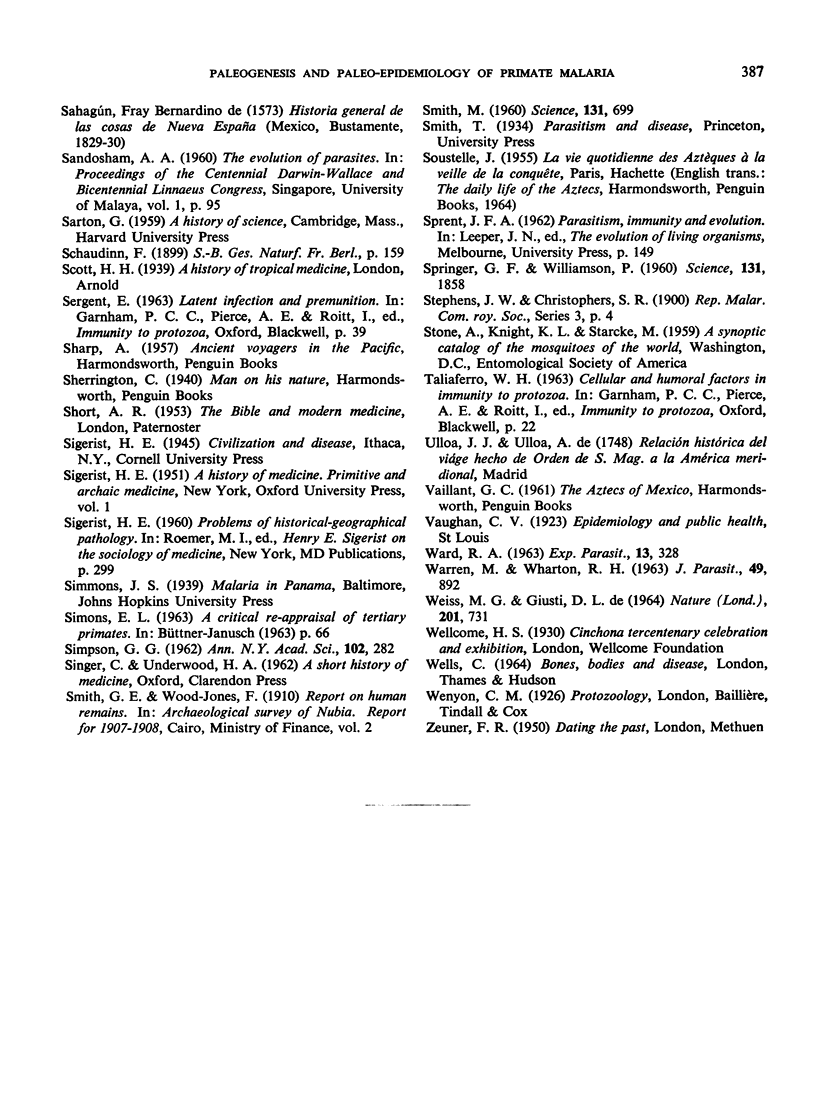
Selected References
These references are in PubMed. This may not be the complete list of references from this article.
- ADLER S., FONER A. Observations on Plasmodium vinckei before and after adaptation to splenectomised hamsters. Bull Res Counc Isr Sect E Exp Med. 1961 Mar;9E:1–23. [PubMed] [Google Scholar]
- BRAY R. S., GARNHAM P. C. ANOPHELES AS VECTORS OF ANIMAL MALARIA PARASITES. Bull World Health Organ. 1964;31:143–147. [PMC free article] [PubMed] [Google Scholar]
- BRAY R. S. THE MALARIA PARASITES OF ANTHROPOID APES. J Parasitol. 1963 Dec;49:888–891. [PubMed] [Google Scholar]
- BRAY R. S. The exoerythrocytic phase of malaria parasites. Int Rev Trop Med. 1963;2:41–74. [PubMed] [Google Scholar]
- BURNET M. A DARWINIAN APPROACH TO IMMUNITY. Nature. 1964 Aug 1;203:451–454. doi: 10.1038/203451a0. [DOI] [PubMed] [Google Scholar]
- COATNEY G. R. Simian malaria. Its importance to worldwide eradication of malaria. JAMA. 1963 Jun 15;184:876–877. doi: 10.1001/jama.1963.73700240006011a. [DOI] [PubMed] [Google Scholar]
- CONTACOS P. G., COATNEY G. R. EXPERIMENTAL ADAPTATION OF SIMIAN MALARIAS TO ABNORMAL HOSTS. J Parasitol. 1963 Dec;49:912–918. [PubMed] [Google Scholar]
- Christophers R. Malaria from a Zoological Point of View: (Section of Comparative Medicine). Proc R Soc Med. 1934 Jun;27(8):991–1000. [PMC free article] [PubMed] [Google Scholar]
- DEEVEY E. S., Jr The human population. Sci Am. 1960 Sep;203:195–204. [PubMed] [Google Scholar]
- EYLES D. E. THE SPECIES OF SIMIAN MALARIA: TAXONOMY, MORPHOLOGY, LIFE CYCLE, AND GEOGRAPHICAL DISTRIBUTION OF THE MONKEY SPECIES. J Parasitol. 1963 Dec;49:866–887. [PubMed] [Google Scholar]
- GARNHAM P. C. DISTRIBUTION OF SIMIAN MALARIA PARASITES IN VARIOUS HOSTS. J Parasitol. 1963 Dec;49:905–911. [PubMed] [Google Scholar]
- GARNHAM P. C. Life history of malaria parasites. Annu Rev Microbiol. 1954;8:153–166. doi: 10.1146/annurev.mi.08.100154.001101. [DOI] [PubMed] [Google Scholar]
- GUERRA F. MAYA MEDICINE. Med Hist. 1964 Jan;8:31–43. doi: 10.1017/s0025727300029070. [DOI] [PMC free article] [PubMed] [Google Scholar]
- HOARE C. A. Reservoir hosts and natural foci of human protozoal infections. Acta Trop. 1962;19:281–317. [PubMed] [Google Scholar]
- HOWELLS W. W. The distribution of man. Sci Am. 1960 Sep;203:113–130. [PubMed] [Google Scholar]
- JARCHO S. SOME OBSERVATIONS ON DISEASE IN PREHISTORIC NORTH AMERICA. Bull Hist Med. 1964 Jan-Feb;38:1–19. [PubMed] [Google Scholar]
- LEAKEY L. S., LEAKEY M. D. RECENT DISCOVERIES OF FOSSIL HOMINIDS IN TANGANYIKA: AT OLDUVAI AND NEAR LAKE NATRON. Nature. 1964 Apr 4;202:5–7. doi: 10.1038/202005a0. [DOI] [PubMed] [Google Scholar]
- LEAKEY L. S., TOBIAS P. V., NAPIER J. R. A NEW SPECIES OF THE GENUS HOMO FROM OLDUVAI GORGE. Nature. 1964 Apr 4;202:7–9. doi: 10.1038/202007a0. [DOI] [PubMed] [Google Scholar]
- LIVINGSTONE F. B. Balancing the human hemoglobin polymorphisms. Hum Biol. 1961 Sep;33:205–219. [PubMed] [Google Scholar]
- MANWELL R. D. Some evolutionary possibilities in the history of the malaria parasites. Indian J Malariol. 1955 Dec;9(4):247–253. [PubMed] [Google Scholar]
- MOTULSKY A. G. Metabolic polymorphisms and the role of infectious diseases in human evolution. Hum Biol. 1960 Feb;32:28–62. [PubMed] [Google Scholar]
- REID J. A., KNIGHT K. L. Classification within the subgenus Anopheles (Diptera, Culicidae). Ann Trop Med Parasitol. 1961 Dec;55:474–488. doi: 10.1080/00034983.1961.11686077. [DOI] [PubMed] [Google Scholar]
- SMITH M. Blood groups of the ancient dead. Science. 1960 Mar 11;131(3402):699–702. doi: 10.1126/science.131.3402.699. [DOI] [PubMed] [Google Scholar]
- Springer G. F., Williamson P. Blood-Group Determinations of Ancient Tissue. Science. 1960 Jun 24;131(3417):1858–1858. doi: 10.1126/science.131.3417.1858-a. [DOI] [PubMed] [Google Scholar]
- WARREN M., WHARTON R. H. THE VECTORS OF SIMIAN MALARIA: IDENTITY, BIOLOGY, AND GEOGRAPHICAL DISTRIBUTION. J Parasitol. 1963 Dec;49:892–904. [PubMed] [Google Scholar]
- WEISS M. L., DEGIUSTI D. L. MODIFICATION OF A MALARIA PARASITE (PLASMODIUM BERGHEI) FOLLOWING PASSAGE THROUGH TISSUE CULTURE. Nature. 1964 Feb 15;201:731–732. doi: 10.1038/201731a0. [DOI] [PubMed] [Google Scholar]


